- Partners and Fundings
- events & news
- green hotels
- who’s talking about us

Green Labels for Sustainable Tourism: an all in one Guide
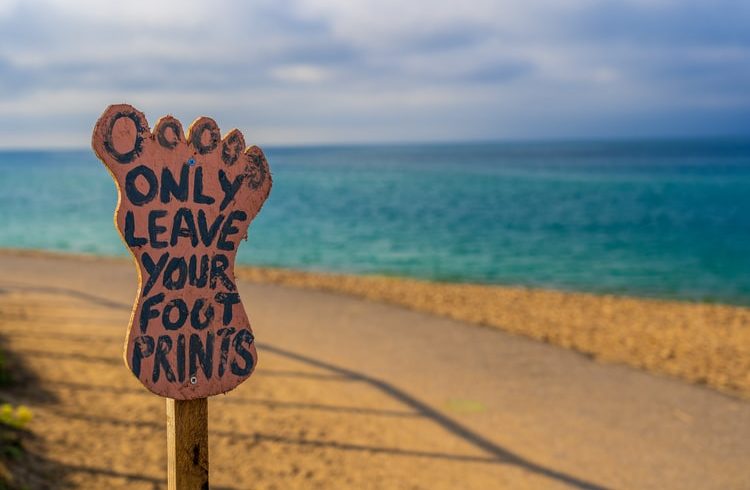
Let’s discover the most important green labels for sustainable tourism and how to recognise them
In the last years, due to a new consciousness for environmental topics, it has developed a new tendency in the way of travelling. More and more people don’t see any more travels as just a moment of relaxation, but they want to be as much eco-friendly as possible also on holiday. For this reason, governments and organisations have created green labels .
Green labels guarantee sustainability . To avoid the attempts of greenwashing, green labels help travellers and consumers to identify touristic accommodations, goods and services that respect the environment, communities and customs and traditions.
What does “green label” mean?

In order to help conscious travellers, governments and associations have created numerous green labels that accommodations get by respecting rigorous criteria . The labels indicate that the accommodation’s performance is environmentally positive, because of the strategies adopted , which respect both the territory and its inhabitants. Consequently, travellers can easily recognise accommodations that work hard to preserve the environment as well as communities and their customs and traditions .
These labels guarantee sustainability because they protect consumers against the attempt of greenwashing . In fact, some companies provide disinformation in order to build up an environmentally responsible facade. But it doesn’t end here. Labels guarantee also that certain products and services are sustainable and help to preserve our Planet.
Not only respect for the environment

When companies and accommodations get the labels, the environmental aspect isn’t the only one taken into account. In fact, two more categories are included: the social and economic aspect and the cultural one.
- Environment : This category includes the use of ecological cleaning supplies, the limited use of water and energy, the recycling of waste, and the adoption of renewable energies .
- Social and economic aspects : this category consists of workers’ rights and decent working conditions.
- Cultural aspect : it includes how travellers respect local usages and traditions and their behaviour towards communities.
The 10 most important international certifications
Let’s find out the ten most important ecolabels in tourism and how to recognise them.

It represents a standard of excellence as far as sustainability and respect for the environment are concerned. This label indicates that the accommodations are respecting rigorous criteria. Travellers that choose these accommodations help to make the difference .
Discover more on the Green Key website
EU Ecolabel
This is probably the most famous and widespread label in Europe . It helps European travellers to easily recognise accommodations and companies that respect the environment by using green energy, limiting the use of water and reducing waste.
Discover more on the Ecolabel website

This German label identifies eco-friendly goods and products in comparison with similar ones . It indicates that the brand or the accommodation seriously undertook the respect of the environment or the safeguard of consumers’ health. In fact, the well-being of the consumers is strongly taken into account.
Discover more on the Blue Angel website
B Corporation

You can find this label in 71 countries and 150 different sectors. This label aims to precisely measure the environmental and social performance of organisations, just like the economical ones. Consumers have therefore access to reliable and constantly updated data which help them to make conscious choices.
Discover more on the B Corporation website
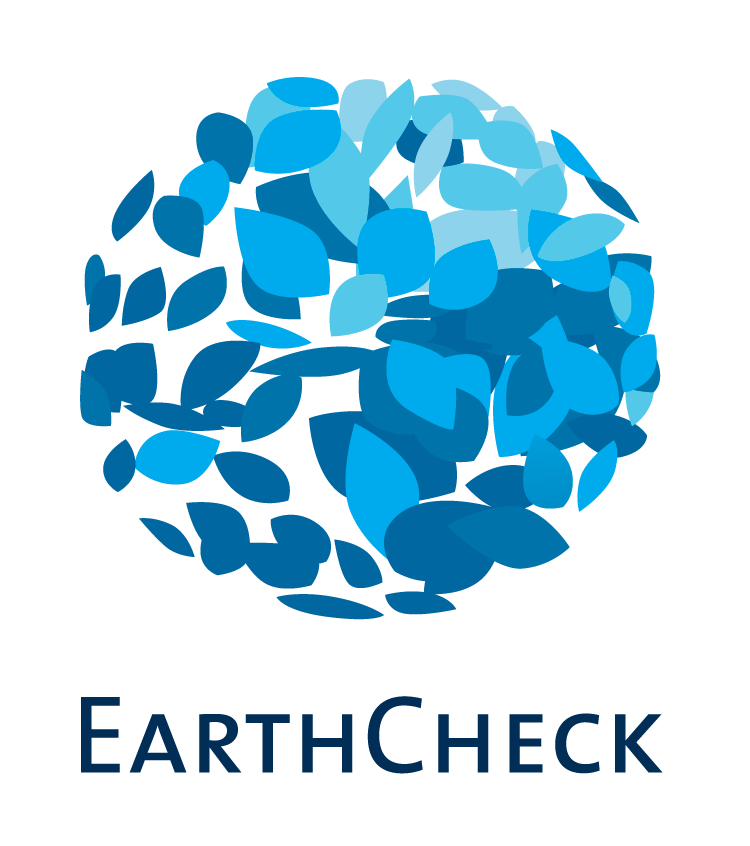
This label was created in 1987. It indicates that governments and organisations propose green destinations where you can not only go on holiday but also work, live or study.
Discover more on the EarthCheck website
This label identifies coastal resorts that respect particular environmental standards such as clean water and beaches. In order to get this label, bathhouses have to offer sustainable services.
Discover more on the Blue Flag website

Through this label, travellers can identify accommodations that offer local and organic products .
Discover more on the Bio Hotels website
Carbon Reduction Label

This label indicates that the organisation is committed to reducing its previously calculated carbon footprint within two years.
Discover more on the Carbon Reduction Label website
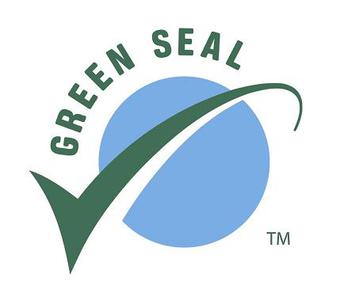
Through this label, consumers can choose goods and services that respect rigorous environmental standards. The lifecycle of the product is thoroughly analysed in order to reduce its carbon footprint .
Discover more on the Green Seal website
Carbon Neutral Certification

The environmental impact of the companies that boast this certification is very low .
Discover more on the Carbon Neutral Certification website
Other touristic certifications
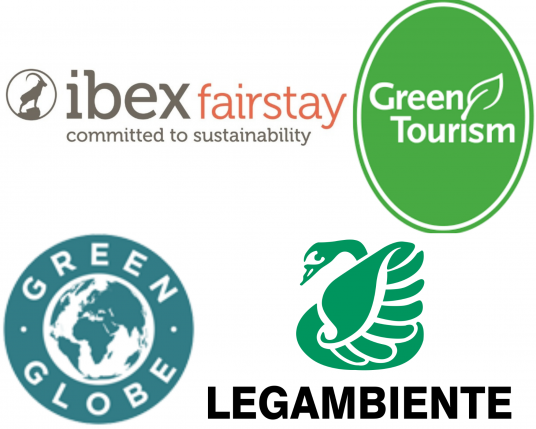
Some countries have created their own certification. In addition to this, a lot of touristic resorts, natural parks and associations have invented their own label in order to protect and preserve the place’s distinctive traits and needs . Let’s see some examples.
The Italian label is Legambiente Turismo , which aims to reduce the environmental impact and promote sustainable holidays. To get the certification, the accommodation must respect certain rules created by the label itself.
In Switzerland , you can find Ibex Fairstay , a label that accommodations get by respecting environmental standards and promoting sustainable development.
Sweden, Ireland and UK have adopted the Green Tourism Business Scheme . Accommodations have to respect 145 criteria, whose monitoring takes place every two years.
California created the Green Globe ecolabel, which other countries adopted at a later time. The participant accommodations become members, this means that quality controls take place periodically. In this way, customers have always access to clear and updated data.
How to find hotels that boast these labels
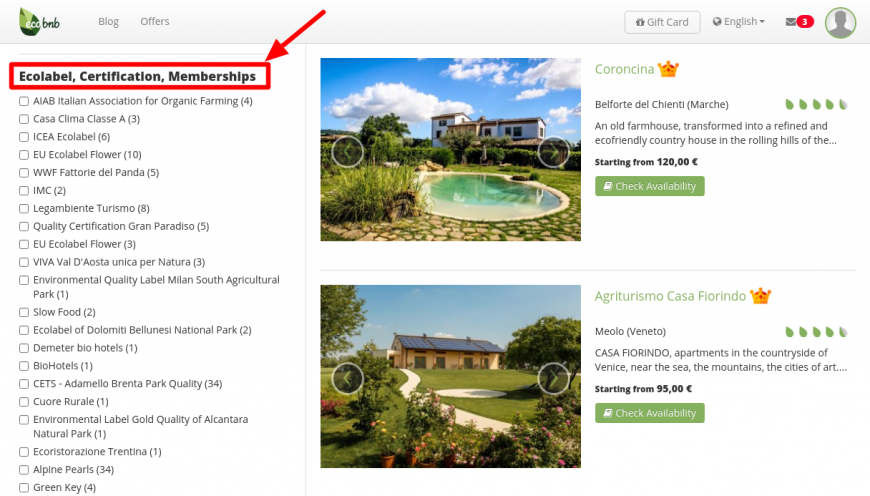
While searching for accommodations on Ecobnb , you can filter the results based on the certifications available. So you can easily find hotels, bed and breakfasts, campsites and apartments that boast international ecolabels . In fact, on Ecobnb, the most important European website dedicated to sustainable tourism, you can find all the labels owned by the accommodations. The list also includes the ones invented by natural parks and touristic resorts.
On the ecolabel index website , you can read more about these international certifications and discover all the labels available.
From now on booking your green holiday will be very easy! Thanks to this guide you can easily recognise the most suitable accommodations for you, in Italy and abroad. Ready to go on an unforgettable and eco-friendly holiday?
Cover image by Nick Fewings on Unsplash
You might also like
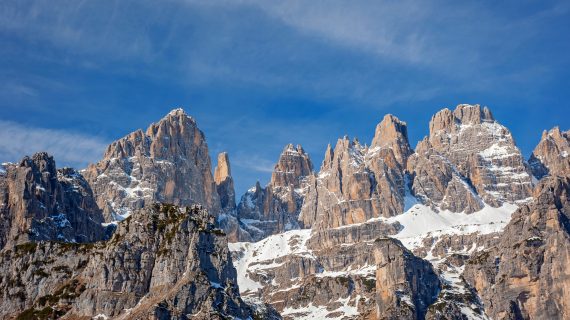
CETS Park Quality: the Brand for Green Hotels in Adamello Brenta Park
Adamello Brenta Park is the largest protected area in Trentino. The CETS – Park Quality Brand selects the best eco-sustainable hotels in this area full of natural wonders. The Adamello Brenta Park is an area rich in unparalleled natural beauty, from the Brenta Dolomites, declared World Heritage Site, to the crystal clear lakes set in […]
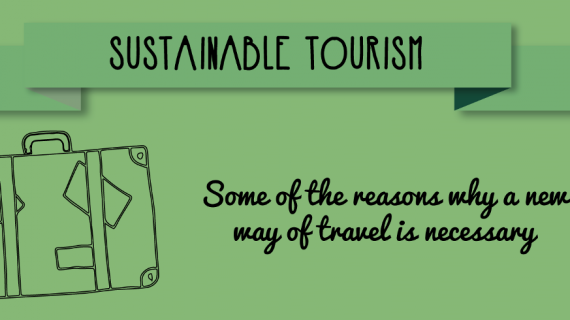
Find out Sustainable Tourism in Europe
Maybe some do not know, but Tourism is in fourth place for the production of CO2 in Europe. If the main responsible factor for the environmental impacts of tourism is transport (particularly airplanes and private cars), which cause around 75% of the tourism-related CO2 emissions, while the second most important cause are the hotels, which […]
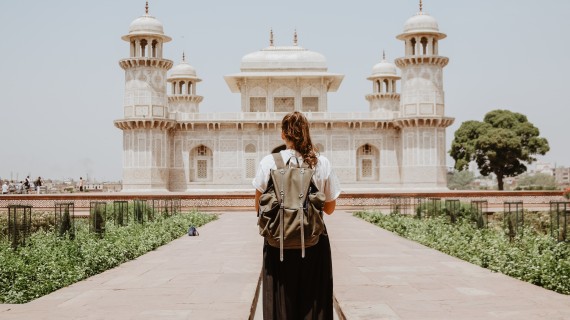
6 Tips For Bringing Sustainability Into Your Travel
Travel these days is so easy. It can be inexpensive to travel any distance all across the globe, allowing you to visit places people never would have dreamed of visiting 100 years ago. But, the not so positive side to all of this is that traveling tends to hurt the environment and even the people […]

5 Ways To Be A More Sustainable Traveler
Traveling can bring so much positive impact to the world. It goes beyond just seeing new places, creating new experiences, and appreciating the culture and practices of others. It’s also a way to learn from the way other people across the globe live and bring home these experiences back home for your friends and family […]
Forgot Your Password?

THE ALASKA POSTER PROJECT
Travel responsibly, the mission, the posters, alaska conservation foundation, responsible travel tips.
Alaska Posters is made possible by a team of passionate tour operators and travel partners coming together to extend the reach of the Alaska Conservation Foundation. Tourism is important for Alaska and we take pride in providing travelers with exceptional, once-in-a-lifetime adventures. But we respect that any type of tourism doesn’t come without impact. The team at Alaska Shore Tours launched the Alaska Poster Project to help make tourism more sustainable, and local businesses continue to join our collective to help spread the word. It’s important to us to educate and promote conservation and responsible traveling so guests can give back and ensure that this beautiful area flourishes and can be enjoyed for future generations to come. Our hope is that tourism can be the solution, rather than a contributor, to the issues that threaten the sustainability of Alaska. We believe responsible travelers can help build thriving communities-environmentally, culturally, and economically!
All donations support the extraordinary efforts of the Alaska Conservation Foundation which is dedicated to protecting Alaska’s natural environment and the diverse cultures and ways of life it sustains. They do this by promoting conservation philanthropy and strategically directing resources to conservation leaders, organizations, and initiatives. We envision a world where responsible travelers help maintain an inspiring Alaska… one that is naturally thriving, biologically and culturally diverse, rich in wildlands, bountiful in terrestrial and marine life, sustainable in its economic development, and thoughtfully protected—forever.
These quality, vintage-style posters are aimed to remind you of some of the beautiful and special places in Alaska. Our Inside Passage Collector’s Set is the perfect display for cruise guests or anyone looking for a memorable piece of art that highlights some of the wonderful experiences in Southeast Alaska.
While we have made our merchandise free to our valued travelers, it is our hope that you consider a donation to help preserve the beautiful state of Alaska. Each purchase & donation reinforces our goal of highlighting tourism as the solution to the issues that threaten Alaska. These posters are a symbol of appreciation and understanding of Alaska’s natural and cultural systems, and the subsequent involvement of visitors in issues affecting those systems. As a responsible traveler, you are contributing to the conservation and management needs of the local people and their environment. Alaska Conservation Foundation needs our support now more than ever, and we hope you’ll join us in ensuring a bright future for Alaska and a place to enjoy for generations to come.
Alaska Conservation Foundation has been at the center of many successful environmental initiatives since its inception. Unsustainable development threatens Alaska. Together, we can be the solution and create a healthy balance for the ecosystems and economies of Alaska.
The Issues:
The Tongass National Forest
The world’s largest remaining old-growth coastal temperate rainforest is at risk from clearcutting and privatization. The U.S. Forest Service continues to offer large tracts of this old-growth forest for intensive logging. Private interests, having already logged their own portion of this ancient forest, constantly lobby Congress to put more of the Tongass in private hands. Yet further clearcutting will come at the expense of those who rely on the intact forest to support the region’s healthy fishing and tourism industries.
The Tongass supports some of the largest wild salmon populations left anywhere in the world. These salmon have provided for the Native people of the region for thousands of years. They support healthy populations of brown bears, wolves and bald eagles as well as a vibrant local fishing tradition.
By purchasing Alaska Posters, you help protect the majestic old-growth rainforest in the Tongass National Forest and advance enduring opportunities for economic and cultural vitality in Southeast Alaska.
Arctic National Wildlife Refuge
Alaska’s Arctic is one of the most ecologically productive and significant places on Earth. A fine balance between what is frozen and what is thawed exists. The region’s fish and wildlife species have profound impacts on Alaska’s Arctic ecosystems, as well as the livelihoods and ways of life of the indigenous people. Although remote and undisturbed, the Arctic is under constant threat from the massive reserves of oil, coal, gas, and minerals housed underground.
Alaska’s Arctic has the nation’s largest oil fields, which are steadily expanding their footprint across the tundra and offshore. There is pressure to drill in critical wildlife areas such as the Arctic National Wildlife Refuge coastal plain, Teshekpuk Lake, as well as offshore in the icy waters of the Chukchi Sea. Shrinking ice cover may bring new shipping traffic to a region that has no marine safety infrastructure and no margin for environmental error. An oil spill the size of the recent Gulf of Mexico spill would mean permanent disaster for the entire region.
ACF provides operational support to groups organizing in the region, including Gwich’in Steering Committee and Northern Alaska Environment Center, and provides project funding to keep the Arctic region in the national spotlight to ensure that the Arctic Refuge is never opened for drilling. ACF’s Alaska Native Fund also helps to empower Alaska Native groups to organize and find financial support.
By purchasing Alaska Posters, you help protect this vulnerable part of the world for future generations.
A vast, natural treasure and a vital part of the nation’s economy… but Alaska’s oceans are in trouble. The arctic ice pack is drastically shrinking while the ocean’s entire underwater ecosystem is being disrupted as warmer water moves steadily north.
As carbon dioxide pollution floods the atmosphere, it dissolves into the world’s oceans, making them more acidic, which is starting to kill off the microscopic marine life at the base of the ocean food chain. Oil companies are eager to drill in Alaska’s stormy, ice-choked northern waters, even though any spill would be a disaster in the Arctic seas.
Alaska Conservation Foundation supports and provides funding to groups like Bering Sea Elders and Alaska Marine Conservation Council as well as Alaska Native tribes working on a range of issues. Alaska Conservation Foundation also provides operating support to groups that are helping protect the rest of Alaska’s oceans and stands ready to help those groups by responding to urgent new threats and emerging opportunities.
By purchasing Alaska Posters, you help keep Alaska’s ocean defense forces strong and its coastal communities healthy.
Thank you for your interest in traveling responsibly! We aim to positively impact the environment and communities of the places we visit by making a few simple changes to the way we travel.
Celebrate, Respect, and Support the Local Culture, Communities, and Economy Dine in locally-owned restaurants and shop for locally-made crafts and souvenirs, which are not always cheaper, but purchasing them contributes greatly to the local economy.
Leave No Trace Better yet, leave each area that you visit cleaner than it was before by picking up trash y ou come across and disposing of it properly.
Respect Wildlife Keep a safe distance from wildlife and never buy fur products or souvenirs like shells or coral which contribute to species endangerment.
Say NO to Plastic Always carry a reusable water bottle and a tote bag with you that you can use instead of plastic bags while shopping. Carrying reusables and recycling are simple and effective ways to make a positive impact.
Advocate for Sustainable Tourism Speak up and let businesses know that you’re interested in sustainable travel and want to know their sustainability initiatives and goals.
Share and Help Spread the Word The more we talk about the way we travel, the more we reinforce how important it is to travel green. Share your experiences with fellow travelers, on social media, and with friends and family.
Together, we can make a BIG impact!
The Products

Vintage Anchorage Travel Poster

Vintage Fairbanks Travel Poster


Vintage Juneau Travel Poster

Vintage Ketchikan Travel Poster

Vintage Skagway Travel Poster
The collective, responsible travel collective.

Interested in joining the collective?
What Is Sustainable Tourism and Why Is It Important?
Sustainable management and socioeconomic, cultural, and environmental impacts are the four pillars of sustainable tourism
- Chapman University
:max_bytes(150000):strip_icc():format(webp)/HaleyMast-2035b42e12d14d4abd433e014e63276c.jpg)
- Harvard University Extension School
- Sustainable Fashion
- Art & Media
What Makes Tourism Sustainable?
The role of tourists, types of sustainable tourism.
Sustainable tourism considers its current and future economic, social, and environmental impacts by addressing the needs of its ecological surroundings and the local communities. This is achieved by protecting natural environments and wildlife when developing and managing tourism activities, providing only authentic experiences for tourists that don’t appropriate or misrepresent local heritage and culture, or creating direct socioeconomic benefits for local communities through training and employment.
As people begin to pay more attention to sustainability and the direct and indirect effects of their actions, travel destinations and organizations are following suit. For example, the New Zealand Tourism Sustainability Commitment is aiming to see every New Zealand tourism business committed to sustainability by 2025, while the island country of Palau has required visitors to sign an eco pledge upon entry since 2017.
Tourism industries are considered successfully sustainable when they can meet the needs of travelers while having a low impact on natural resources and generating long-term employment for locals. By creating positive experiences for local people, travelers, and the industry itself, properly managed sustainable tourism can meet the needs of the present without compromising the future.
What Is Sustainability?
At its core, sustainability focuses on balance — maintaining our environmental, social, and economic benefits without using up the resources that future generations will need to thrive. In the past, sustainability ideals tended to lean towards business, though more modern definitions of sustainability highlight finding ways to avoid depleting natural resources in order to keep an ecological balance and maintain the quality of environmental and human societies.
Since tourism impacts and is impacted by a wide range of different activities and industries, all sectors and stakeholders (tourists, governments, host communities, tourism businesses) need to collaborate on sustainable tourism in order for it to be successful.
The World Tourism Organization (UNWTO) , which is the United Nations agency responsible for the promotion of sustainable tourism, and the Global Sustainable Tourism Council (GSTC) , the global standard for sustainable travel and tourism, have similar opinions on what makes tourism sustainable. By their account, sustainable tourism should make the best use of environmental resources while helping to conserve natural heritage and biodiversity, respect the socio-culture of local host communities, and contribute to intercultural understanding. Economically, it should also ensure viable long-term operations that will provide benefits to all stakeholders, whether that includes stable employment to locals, social services, or contributions to poverty alleviation.
The GSTC has developed a series of criteria to create a common language about sustainable travel and tourism. These criteria are used to distinguish sustainable destinations and organizations, but can also help create sustainable policies for businesses and government agencies. Arranged in four pillars, the global baseline standards include sustainable management, socioeconomic impact, cultural impacts, and environmental impacts.
Travel Tip:
The GSTC is an excellent resource for travelers who want to find sustainably managed destinations and accommodations and learn how to become a more sustainable traveler in general.
Environment
Protecting natural environments is the bedrock of sustainable tourism. Data released by the World Tourism Organization estimates that tourism-based CO2 emissions are forecast to increase 25% by 2030. In 2016, tourism transport-related emissions contributed to 5% of all man-made emissions, while transport-related emissions from long-haul international travel were expected to grow 45% by 2030.
The environmental ramifications of tourism don’t end with carbon emissions, either. Unsustainably managed tourism can create waste problems, lead to land loss or soil erosion, increase natural habitat loss, and put pressure on endangered species . More often than not, the resources in these places are already scarce, and sadly, the negative effects can contribute to the destruction of the very environment on which the industry depends.
Industries and destinations that want to be sustainable must do their part to conserve resources, reduce pollution, and conserve biodiversity and important ecosystems. In order to achieve this, proper resource management and management of waste and emissions is important. In Bali, for example, tourism consumes 65% of local water resources, while in Zanzibar, tourists use 15 times as much water per night as local residents.
Another factor to environmentally focused sustainable tourism comes in the form of purchasing: Does the tour operator, hotel, or restaurant favor locally sourced suppliers and products? How do they manage their food waste and dispose of goods? Something as simple as offering paper straws instead of plastic ones can make a huge dent in an organization’s harmful pollutant footprint.
Recently, there has been an uptick in companies that promote carbon offsetting . The idea behind carbon offsetting is to compensate for generated greenhouse gas emissions by canceling out emissions somewhere else. Much like the idea that reducing or reusing should be considered first before recycling , carbon offsetting shouldn’t be the primary goal. Sustainable tourism industries always work towards reducing emissions first and offset what they can’t.
Properly managed sustainable tourism also has the power to provide alternatives to need-based professions and behaviors like poaching . Often, and especially in underdeveloped countries, residents turn to environmentally harmful practices due to poverty and other social issues. At Periyar Tiger Reserve in India, for example, an unregulated increase in tourists made it more difficult to control poaching in the area. In response, an eco development program aimed at providing employment for locals turned 85 former poachers into reserve gamekeepers. Under supervision of the reserve’s management staff, the group of gamekeepers have developed a series of tourism packages and are now protecting land instead of exploiting it. They’ve found that jobs in responsible wildlife tourism are more rewarding and lucrative than illegal work.
Flying nonstop and spending more time in a single destination can help save CO2, since planes use more fuel the more times they take off.
Local Culture and Residents
One of the most important and overlooked aspects of sustainable tourism is contributing to protecting, preserving, and enhancing local sites and traditions. These include areas of historical, archaeological, or cultural significance, but also "intangible heritage," such as ceremonial dance or traditional art techniques.
In cases where a site is being used as a tourist attraction, it is important that the tourism doesn’t impede access to local residents. For example, some tourist organizations create local programs that offer residents the chance to visit tourism sites with cultural value in their own countries. A program called “Children in the Wilderness” run by Wilderness Safaris educates children in rural Africa about the importance of wildlife conservation and valuable leadership development tools. Vacations booked through travel site Responsible Travel contribute to the company’s “Trip for a Trip” program, which organizes day trips for disadvantaged youth who live near popular tourist destinations but have never had the opportunity to visit.
Sustainable tourism bodies work alongside communities to incorporate various local cultural expressions as part of a traveler’s experiences and ensure that they are appropriately represented. They collaborate with locals and seek their input on culturally appropriate interpretation of sites, and train guides to give visitors a valuable (and correct) impression of the site. The key is to inspire travelers to want to protect the area because they understand its significance.
Bhutan, a small landlocked country in South Asia, has enforced a system of all-inclusive tax for international visitors since 1997 ($200 per day in the off season and $250 per day in the high season). This way, the government is able to restrict the tourism market to local entrepreneurs exclusively and restrict tourism to specific regions, ensuring that the country’s most precious natural resources won’t be exploited.
Incorporating volunteer work into your vacation is an amazing way to learn more about the local culture and help contribute to your host community at the same time. You can also book a trip that is focused primarily on volunteer work through a locally run charity or non profit (just be sure that the job isn’t taking employment opportunities away from residents).
It's not difficult to make a business case for sustainable tourism, especially if one looks at a destination as a product. Think of protecting a destination, cultural landmark, or ecosystem as an investment. By keeping the environment healthy and the locals happy, sustainable tourism will maximize the efficiency of business resources. This is especially true in places where locals are more likely to voice their concerns if they feel like the industry is treating visitors better than residents.
Not only does reducing reliance on natural resources help save money in the long run, studies have shown that modern travelers are likely to participate in environmentally friendly tourism. In 2019, Booking.com found that 73% of travelers preferred an eco-sustainable hotel over a traditional one and 72% of travelers believed that people need to make sustainable travel choices for the sake of future generations.
Always be mindful of where your souvenirs are coming from and whether or not the money is going directly towards the local economy. For example, opt for handcrafted souvenirs made by local artisans.
Growth in the travel and tourism sectors alone has outpaced the overall global economy growth for nine years in a row. Prior to the pandemic, travel and tourism accounted for an $9.6 trillion contribution to the global GDP and 333 million jobs (or one in four new jobs around the world).
Sustainable travel dollars help support employees, who in turn pay taxes that contribute to their local economy. If those employees are not paid a fair wage or aren’t treated fairly, the traveler is unknowingly supporting damaging or unsustainable practices that do nothing to contribute to the future of the community. Similarly, if a hotel doesn’t take into account its ecological footprint, it may be building infrastructure on animal nesting grounds or contributing to excessive pollution. The same goes for attractions, since sustainably managed spots (like nature preserves) often put profits towards conservation and research.
Costa Rica was able to turn a severe deforestation crisis in the 1980s into a diversified tourism-based economy by designating 25.56% of land protected as either a national park, wildlife refuge, or reserve.
While traveling, think of how you would want your home country or home town to be treated by visitors.
Are You a Sustainable Traveler?
Sustainable travelers understand that their actions create an ecological and social footprint on the places they visit. Be mindful of the destinations , accommodations, and activities you choose, and choose destinations that are closer to home or extend your length of stay to save resources. Consider switching to more environmentally friendly modes of transportation such as bicycles, trains, or walking while on vacation. Look into supporting locally run tour operations or local family-owned businesses rather than large international chains. Don’t engage in activities that harm wildlife, such as elephant riding or tiger petting , and opt instead for a wildlife sanctuary (or better yet, attend a beach clean up or plan an hour or two of some volunteer work that interests you). Leave natural areas as you found them by taking out what you carry in, not littering, and respecting the local residents and their traditions.
Most of us travel to experience the world. New cultures, new traditions, new sights and smells and tastes are what makes traveling so rewarding. It is our responsibility as travelers to ensure that these destinations are protected not only for the sake of the communities who rely upon them, but for a future generation of travelers.
Sustainable tourism has many different layers, most of which oppose the more traditional forms of mass tourism that are more likely to lead to environmental damage, loss of culture, pollution, negative economic impacts, and overtourism.
Ecotourism highlights responsible travel to natural areas that focus on environmental conservation. A sustainable tourism body supports and contributes to biodiversity conservation by managing its own property responsibly and respecting or enhancing nearby natural protected areas (or areas of high biological value). Most of the time, this looks like a financial compensation to conservation management, but it can also include making sure that tours, attractions, and infrastructure don’t disturb natural ecosystems.
On the same page, wildlife interactions with free roaming wildlife should be non-invasive and managed responsibly to avoid negative impacts to the animals. As a traveler, prioritize visits to accredited rescue and rehabilitation centers that focus on treating, rehoming, or releasing animals back into the wild, such as the Jaguar Rescue Center in Costa Rica.
Soft Tourism
Soft tourism may highlight local experiences, local languages, or encourage longer time spent in individual areas. This is opposed to hard tourism featuring short duration of visits, travel without respecting culture, taking lots of selfies , and generally feeling a sense of superiority as a tourist.
Many World Heritage Sites, for example, pay special attention to protection, preservation, and sustainability by promoting soft tourism. Peru’s famed Machu Picchu was previously known as one of the world’s worst victims of overtourism , or a place of interest that has experienced negative effects (such as traffic or litter) from excessive numbers of tourists. The attraction has taken steps to control damages in recent years, requiring hikers to hire local guides on the Inca Trail, specifying dates and time on visitor tickets to negate overcrowding, and banning all single use plastics from the site.
Traveling during a destination’s shoulder season , the period between the peak and low seasons, typically combines good weather and low prices without the large crowds. This allows better opportunities to immerse yourself in a new place without contributing to overtourism, but also provides the local economy with income during a normally slow season.
Rural Tourism
Rural tourism applies to tourism that takes place in non-urbanized areas such as national parks, forests, nature reserves, and mountain areas. This can mean anything from camping and glamping to hiking and WOOFing. Rural tourism is a great way to practice sustainable tourism, since it usually requires less use of natural resources.
Community Tourism
Community-based tourism involves tourism where local residents invite travelers to visit their own communities. It sometimes includes overnight stays and often takes place in rural or underdeveloped countries. This type of tourism fosters connection and enables tourists to gain an in-depth knowledge of local habitats, wildlife, and traditional cultures — all while providing direct economic benefits to the host communities. Ecuador is a world leader in community tourism, offering unique accommodation options like the Sani Lodge run by the local Kichwa indigenous community, which offers responsible cultural experiences in the Ecuadorian Amazon rainforest.
" Transport-related CO 2 Emissions of the Tourism Sector – Modelling Results ." World Tourism Organization and International Transport Forum , 2019, doi:10.18111/9789284416660
" 45 Arrivals Every Second ." The World Counts.
Becken, Susanne. " Water Equity- Contrasting Tourism Water Use With That of the Local Community ." Water Resources and Industry , vol. 7-8, 2014, pp. 9-22, doi:10.1016/j.wri.2014.09.002
Kutty, Govindan M., and T.K. Raghavan Nair. " Periyar Tiger Reserve: Poachers Turned Gamekeepers ." Food and Agriculture Organization.
" GSTC Destination Criteria ." Global Sustainable Tourism Council.
Rinzin, Chhewang, et al. " Ecotourism as a Mechanism for Sustainable Development: the Case of Bhutan ." Environmental Sciences , vol. 4, no. 2, 2007, pp. 109-125, doi:10.1080/15693430701365420
" Booking.com Reveals Key Findings From Its 2019 Sustainable Travel Report ." Booking.com.
" Economic Impact Reports ." World Travel and Tourism Council .
- Costa Rica’s Keys to Success as a Sustainable Tourism Pioneer
- How to Be a Sustainable Traveler: 18 Tips
- Regenerative Travel: What It Is and How It's Outperforming Sustainable Tourism
- What Is Ecotourism? Definition, Examples, and Pros and Cons
- What Is Experiential Tourism?
- What Is Community-Based Tourism? Definition and Popular Destinations
- 3 More Rules for Sustainable Tourism
- What Is Overtourism and Why Is It Such a Big Problem?
- How to Become a Geo-Traveler
- What Is Voluntourism? Does It Help or Harm Communities?
- The World Doesn't Want Your Inukshuk
- 8 Incredible Rainforest Destinations Around the World
- 'Scattered Hotels' Are Saving Historic Villages in Italy and Beyond
- 15 Travel Destinations Being Ruined by Tourism
- How to Make Travel More Sustainable
- What's Special About the Faroe Islands

The Sustainable Tourism 2030 Pledge is a commitment to improve the sustainability performance of your tourism business or destination between now and 2030.
This is more than a Pledge. Launched in June 2021, the Sustainable Tourism 2030 Pledge is a global movement of individuals, businesses, and organizations within the tourism and hospitality industry that believe tourism has a tremendous opportunity to become a force for good and change the world. We believe that improving the social, cultural, environmental, and economic performance of our industry in support of the UN Sustainable Development Goals and UN 2030 Agenda for Sustainable Development is not a trend or a cause, but is essential to the long term health and well-being of this important sector of the global economy. The Sustainable Tourism 2030 Pledge is built upon the GreenStep Sustainable Tourism criteria, which has achieved “Recognized” status from the Global Sustainable Tourism Council.
The purpose of the Sustainable Tourism 2030 Pledge is to help tourism businesses and destinations measure and improve their sustainability performance. By simplifying the steps and removing the cost barrier through our free measurement tool, we can create a common framework and benchmark for the global tourism industry.
Over time, by offering best practices, free resources, tools, and templates, we will break down the steps for tourism destinations and businesses to incorporate sustainability into their operations in a simple, yet meaningful way. By signing on the Sustainable Tourism 2030 Pledge, your organization will receive access to these tools, templates, and resources as they come available.
Take the Pledge in 3 Easy Steps!
Make a public commitment to measure and improve your sustainability performance between now and 2030 by publishing a statement on your website. submit your published statement for verification., be recognized as a sustainable tourism 2030 pledge signatory and join a community of like-minded industry leaders who are all committed to doing their part to address the global issues facing our communities and the planet., once you submit the pledge form and your public commitment has been verified, we will send you login instructions via email to access the free greenstep sustainable tourism assessment for your business or destination to begin measuring your performance. your assessment must be completed within 12 months of your public commitment., we recommend referencing the pledge guide for a public commitment example for more inspiration:, public commitment example.
[Organization Name] has signed the Sustainable Tourism 2030 Pledge , to demonstrate our commitment to improving our sustainability score between now and 2030.
The UN World Tourism Organization defines sustainable tourism as “tourism that takes full account of its current and future economic, social and environmental impacts, addressing the needs of visitors, the industry, the environment and host communities.”
Each year, we commit to measuring and improving our sustainability performance in the following ways:
[input a few sustainability initiatives you might already be working on here, or use the self-assessment and sustainability scorecard for ideas – some examples could include:
- Support local entrepreneurs and the community by developing a sustainable purchasing policy
- Partner with local cultural and natural heritage organizations and sites to promote the unique cultural and natural heritage of our destination
- Conduct an accessibility and inclusivity audit to ensure we meet the needs of all visitors
- Measure our energy consumption and identify ways to improve our energy efficiency, lower costs, and reduce our carbon footprint
- Sign on to Tourism Declares and develop a Climate Action Plan
Feel free to personalize this public commitment as you see fit. You could include a quote about why your organization is committed to becoming more sustainable, any sustainability-related initiatives you are already working on, or messages that speak directly to your guests. Visit our signatories page to see examples from other businesses and destinations who have signed.
After Taking The Pledge, You Receive:
A listing on the sustainable tourism 2030 pledge website.
Your organization name and a link to your public commitment will be published on the signatories page of this website once your public commitment has been verified by our team.
Your Sustainability Score
Once you have completed your assessment you will receive your free sustainability scorecard! You can use the scorecard to make informed decisions about how to improve your sustainability.
Access to resources & support
As a signatory to the pledge, we are developing and will provide you with access to tools and resources as they become available.
We’re sorry, but Freepik doesn’t work properly without JavaScript enabled. FAQ Contact
AI-generated image
From your imagination to a tangible image in just a few words
From social media posts or prints to any other layouts, and everything in between
See your designs in action on apparel, packaging or prints
- Notifications
- Go back Remove
- No notifications to show yet You’ll see useful information here soon. Stay tuned!
- Downloads 0/60 What is this?
- My collections
- My subscription
Poster eco tourism template
Related tags.
- nature poster
- poster template
- flyer travel
- poster travel
- flyer poster
- flyer template
- template travel

COMMENTS
Edit a Sustainability banner Editable templates to make a poster for Sustainability. Create all kinds of infographics with the 17 Sustainable Development Goals (SDGs) with online free sustainability templates. Talk about sustainable development in high schools or colleges. Also use sustainability plan templates for companies to show your projects.
Gabon Tourism Bridge River Sky Tree Water Sustainable Forest Poster. By Axel20. $16.66. $23.80 (30% off) Tags: sustainable travel, eco friendly, fashion, ethical tourism, minimalist design, nature lover, wanderlust, responsible traveler, adventure, environmental awareness, mindful living, inspirational quote.
Let's discover the most important green labels for sustainable tourism and how to recognise them. In the last years, due to a new consciousness for environmental topics, it has developed a new tendency in the way of travelling.More and more people don't see any more travels as just a moment of relaxation, but they want to be as much eco-friendly as possible also on holiday.
Ecotourism Poster. Poster on ecotourism is created for the awareness among local tourists about the importance of conservation of nature. And to help develop responsible attitude in tourists towards greener and cleaner environment. The idea was to show nature in a trash can, to object sarcastically that we are putting nature in trash can ...
By splooshpaints. $25.65. Aesthetic Wanderlust Shirt with Inspirational Saying - There is no Planet B - Sustainable Travel Shirt - Save the Planet - Wanderlust Gifts Poster. By Tom N. $27.22. Minimalist black and white monstera plant Poster. By Emily Zigo. $28.27. Sustainable Fashion Poster.
Eco Brick Wall Illustration Poster. By SaShaCreations. $20.10. $25.13 (20% off) Three whales in the ocean Poster. By Patricia Hofmeester. $50.25. $62.82 (20% off) Plains Zebra Portrait, Akagera National Park, Rwanda, by Carole-Anne Fooks Poster.
Tourism is important for Alaska and we take pride in providing travelers with exceptional, once-in-a-lifetime adventures. But we respect that any type of tourism doesn't come without impact. The team at Alaska Shore Tours launched the Alaska Poster Project to help make tourism more sustainable, and local businesses continue to join our ...
The World Tourism Organization defines sustainable tourism as "tourism that takes full account of its current and future economic, social and environmental impacts, addressing the needs of visitors, the industry, the environment and host communities". Based on General assembly resolution 70/193, 2017 was declared as the International Year of ...
Sustainable tourism considers its current and future economic, social, and environmental impacts by addressing the needs of its ecological surroundings and the local communities. This is achieved ...
Launched in June 2021, the Sustainable Tourism 2030 Pledge is a global movement of individuals, businesses, and organizations within the tourism and hospitality industry that believe tourism has a tremendous opportunity to become a force for good and change the world. We believe that improving the social, cultural, environmental, and economic ...
eco. environment poster. green poster. flat poster. environment. 17+. Download this Free Vector about Flat design ecotourism poster template, and discover more than 15 Million Professional Graphic Resources on Freepik.
Find and save ideas about ecotourism poster on Pinterest.
Free PSD | Eco tourism poster template. Discover how AI boosts our tools and features, as well as your creativity. Download millions of royalty-free vectors, illustrations, photos, and AI-generated images. Go beyond the limits of your imagination with high quality images generated by Artificial Intelligence. Join Freepik's contributors and ...
Efforts to balance the economic benefits of tourism with the need to protect the natural beauty of the Urals are ongoing, with initiatives focused on sustainable tourism practices and conservation efforts. Indigenous Peoples and Culture. The Ural Mountain Range is also home to several indigenous peoples who have inhabited this region for centuries.
1. Visit the historic Salavat Yulaev Monument. Source: Photo by Wikimedia Commons user Lesnoy Volk used under CC BY 2.0. Built in 1967, this historical monument in Ufa is dedicated to Salavat Yulaev, the Bashkir national hero who was a companion of Emelian Pugachev and part of Pugachev's Rebellion.
And a number of posters telling you about... 8. Aqua Park Planeta. 144. Water Parks. 9. Victory Park. 153. Parks. By ivanp200. Not just a park , but a rememberence and symbol of victory. ... Ufa Tourism Ufa Hotels Ufa Bed and Breakfast Flights to Ufa Ufa Restaurants Things to Do in Ufa Ufa Travel Forum Ufa Photos Ufa Map. Hotels.
Download this Free PSD File about Poster eco tourism template, and discover more than 336 Million Professional Graphic Resources on Freepik. #freepik #psd #natureposter #eco #postertemplate